There are so many benefits of playdough for toddlers and preschoolers that it’s a great activity for them to do regularly.
What is it that makes this wonderful substance a favourite for young kids and what are they learning while moulding it?
Playdough can be found in every preschool classroom and usually in the home too. It can be bought or it can be made easily out of just 3 or 4 basic ingredients. (Here’s a recipe for homemade playdough – without cream of tartar).
Children love playdough. It is soft and squishy and they can make anything out of it. Perhaps what makes it so appealing is that it is relaxing and therapeutic.
When a child moulds with playdough, the experience is always positive. There is no right or wrong way to do it so they always feel success with their creations.
Playdough appeals to various learning styles as children can experience this tactile material through the senses.
How does playdough help a child’s development?
Here are 7 of the major benefits of playing with playdough for toddlers and preschoolers.
1. Fine Motor Development
Moulding playdough is excellent for developing a child’s fine motor skills.
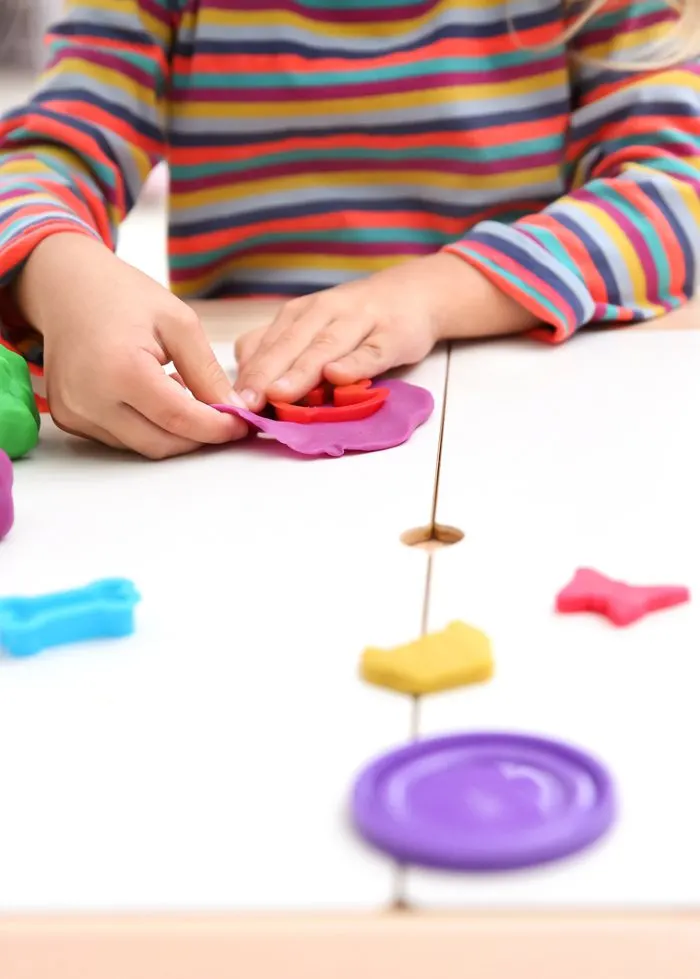
Children need to develop their finger muscles and have proper finger control before they can learn to write at school.
During the preschool years, they develop these muscles through a variety of play activities. Playdough is one of the best for this.
Children mould, flatten, squish, pinch, break and roll the substance.
To develop fine motor control with playdough even further, give your child extra utensils to play with such as cutters, plastic knives and a rolling pin.
They can also use objects like beads, buttons and shells to add to their creations.
2. Vocabulary
One of the ways playdough helps children’s development is that while they work on their creations they form new ideas and concepts.
They will learn new words such as roll, squeeze and flatten, as well as words describing what they are making.
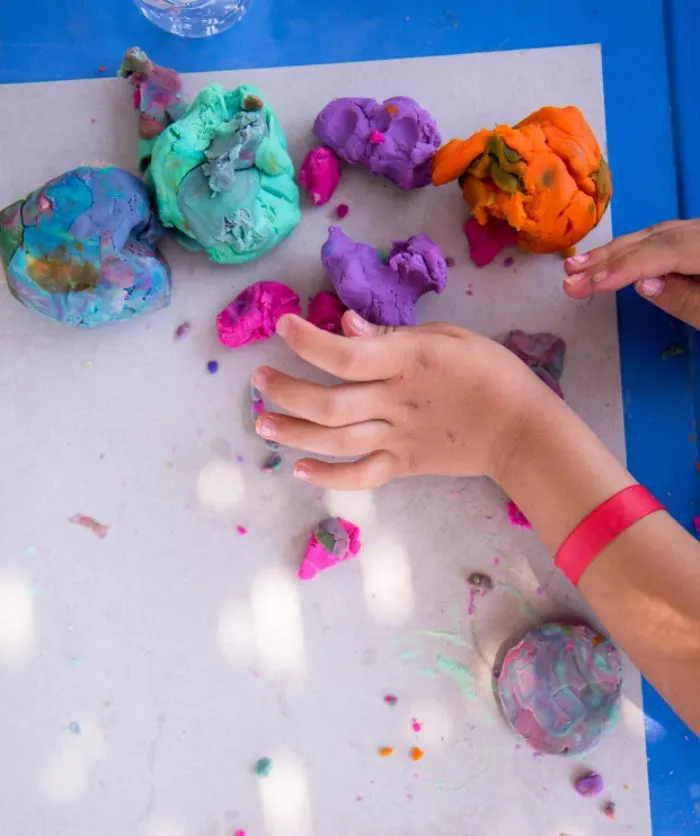
Their vocabulary increases while chatting to peers while moulding and also through a parent or teacher verbalising what they are doing as they play.
3. Creativity
When a child works with playdough, they basically have a blank canvas waiting to be moulded into something unique.
It develops creativity as a child has to mould from an image they hold mentally. Even if they try to reproduce something they have already seen, theirs will always look different.
As children get older and more experienced at moulding playdough, their creations will show more detail and creativity.
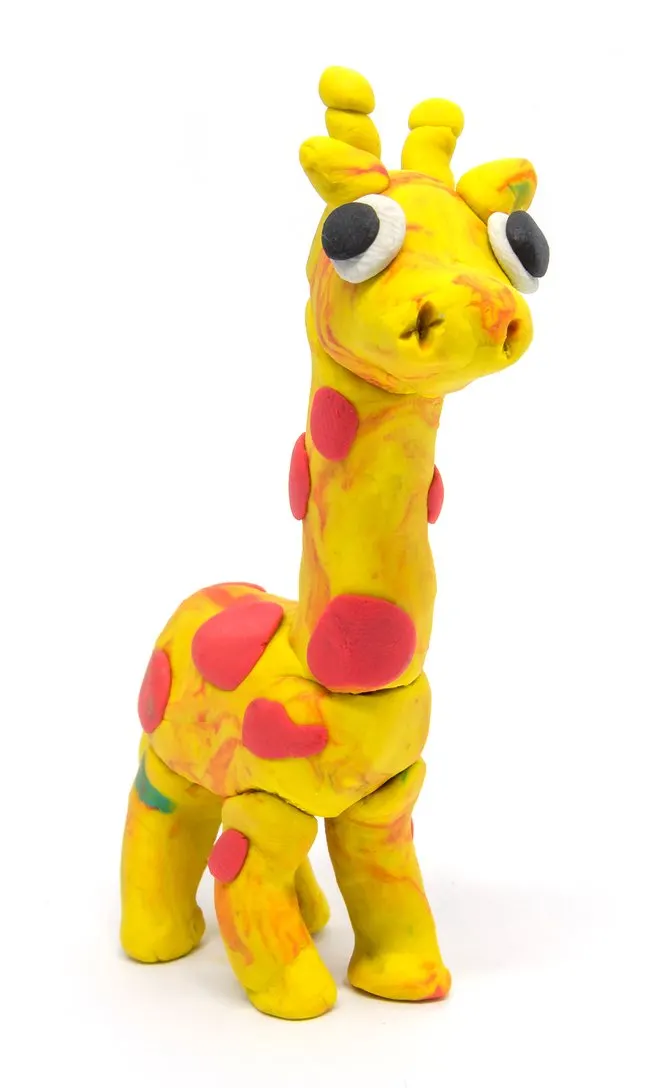
4. Literacy and Numeracy
Following a basic recipe for playdough is a great opportunity to teach your child some early maths skills by learning about measurement.
They also learn about reading information for meaning, such as recipe instructions.
Adding small objects such as beads or buttons can provide a great opportunity to learn about number concepts like one-to-one correspondence, as well as activities such as using a biscuit cutter to make multiple shapes out of the playdough.

Playdough is also the perfect medium for moulding letters and numbers.
When teaching children to write, they must start in the preschool years by playing with large letters or forming them in the sandpit, drawing them on the paving, etc.
They are not yet ready to hold a pencil and learn small letter formation.
By using playdough, they can roll long “snakes” and shape them into letters with a parent’s guidance, thus learning letter formation in a kinesthetic way.
This is a great way to teach children to write their name.
5. Concentration
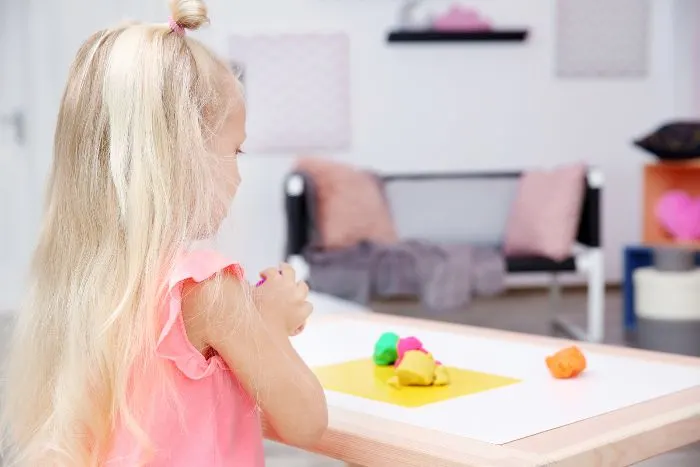
One of the best skills that playdough develops is attention span.
Playdough is a quiet activity that requires a child to sit still for periods of time. This is great for lengthening a child’s concentration span over time.
The more involved they are in what they are making, the longer they will push themselves to stay focused.
As children develop a sense of perseverance they will also concentrate until their creation looks the way they want it to look, making changes until it is just right.
6. Science Concepts
Playdough promotes cognitive development in many ways, such as learning early science concepts.
An example of a scientific concept is discovering materials and how they change.
The texture of playdough can be changed by experimenting with varying the ingredients or adding water to make it harder, softer, more watery, etc.
Other substances such as sand and water can also be mixed and experimented with in a similar way.
7. Therapeutic Value
As mentioned above, playdough is an activity with which children always have a positive experience. The very nature of the substance makes it calming to play with.
Even some adults cannot resist playing with playdough when they come across it.
The activity is relaxing and highly therapeutic. It can reduce stress and is a wonderful medium for an anxious child.
Playdough can be perfect for calming down a child and transitioning them from noisy play to some quiet time and relaxation.
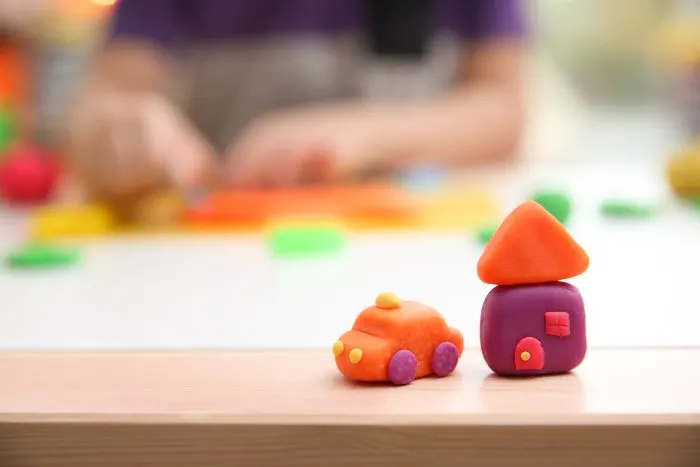
These are just some of the reasons highlighting the importance of playdough in early childhood.


Antonia Jiménez
Sunday 25th of October 2020
Buenísimas ideas para haser plastilina de diferentes formas las boy a implementar en mi salon de clases.muchas gracias.
Tanja Mcilroy
Tuesday 27th of October 2020
Muchas gracias Antonia!
cole
Friday 2nd of October 2020
i am going to make play doe for my little sister
Tanja Mcilroy
Tuesday 6th of October 2020
Awesome!!
lady empress
Thursday 18th of June 2020
great job